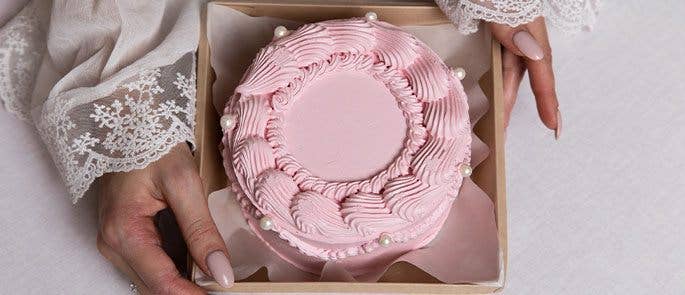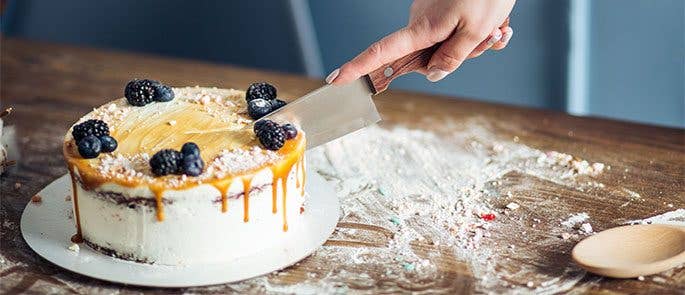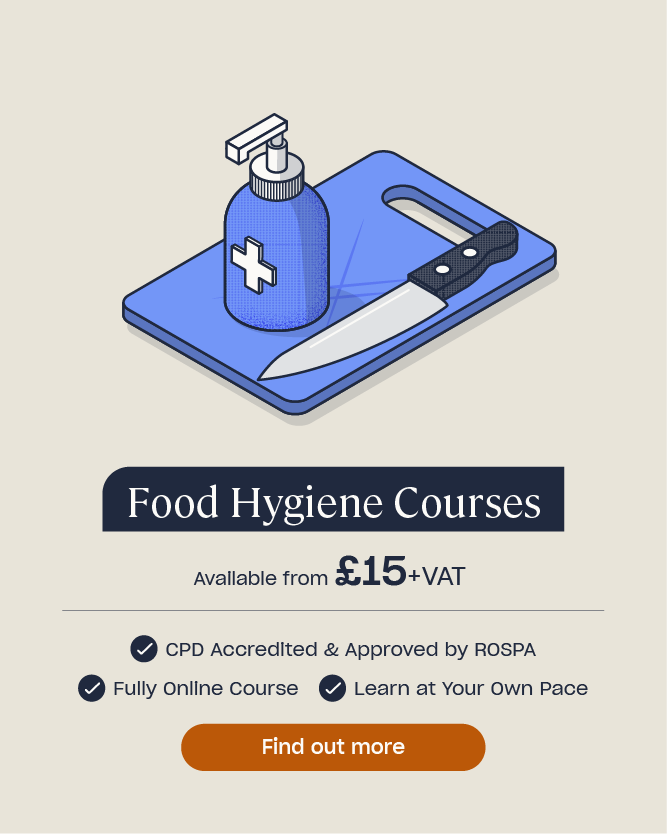Cake Care Instructions: Free Template
Home baking, cake making and cupcake businesses are ever-popular and a good way for many of us to earn an income from the comfort of our own kitchens. Whether you own a bakery, run a cake stall in a market or whip up baked goods from home, it’s important that your customers are able to take cake of their cakes once they’ve purchased them in order to get the most out of their handmade goods.
In this article, we’ll explain more about how to transport cakes safely, how to store cakes at home and how to serve and cut a cake effectively. We’ll also provide cake business owners with a free cake care instructions template that you can download and use for your own cake making business.

What is a Cake Care Guide?
If you own a cake or cupcake making business, then you’ll know that your cakes are delicate items and need to be handled with care. Cakes are handmade products and sometimes hours of work can go into decorating them, especially if it’s a cake for a special event like a wedding.
To ensure your customers enjoy their cakes at their best – and reduce the chances of damage on the way home – it’s important that they know how to transport, store and serve their cake once they’ve bought it from you.
A cake care instructions card can be used as a handy guide to help your customers easily recognise how to look after their purchase – all you need to do is download and print the cake care guide template and attach one to each cake purchased. Your customers will then have all the information they need in one location to ensure their cake remains good enough to eat. You can download a free cake care template later in the article.
Cake Handling and Cake Transport Instructions
Handling and transporting a cake safely from the point of purchase to the customer’s home is a delicate process and essential for preserving its appearance. A mishandled cake box can lead to a squashed cake, decorations falling off or the icing melting.

The following cake handling and cake transport tips will ensure your cake reaches its destination unharmed:
- If the cake or baked goods are put in a bag, keep them level in the bottom of the bag. Don’t tip the box or bag on its side and hold it steady.
- Only carry one bag at a time, as carrying multiple bags in one hand is likely to make the boxes tilt.
- Only put one cake box in each bag, as stacking them will cause the underneath box to be squashed and the decoration may get damaged.
- If carrying a cake box in your arms, hold the box from underneath and keep it level. Avoid tilting the box or holding it by the sides, as this may cause the cake to slide or squash.
- If transporting a cake in the car, place it in the boot or the passenger footwell, as these surfaces are the most level. Don’t put it on the passenger seat.
- Keep the air conditioning on in the car whilst the cake is being transported to prevent the icing from melting. The air con will act like a fridge.
- Keep journey times to a minimum (ideally under 30 minutes) to avoid the cake warming up and the icing or buttercream melting.
- Avoid bumpy car journeys if possible – take main roads and not country lanes – to keep the cake level and stable throughout transportation.
Cake Storage Instructions and Cake Shelf Life
Storing baked goods correctly is essential for preserving their shelf life and maintaining food safety. If cakes aren’t stored properly once the customer gets them home, then they might melt, change texture or become unsafe to eat because they’ve spent too long in the temperature danger zone.

Best practice for cake storage at home is as follows:
- Store cakes and cupcakes in the fridge as soon as possible to keep them fresh.
- Avoid storing cakes in direct sunlight, near a source of heat or at room temperature, as this can cause buttercream and icing to melt.
- Once a cake has been cut, store it in an airtight container or wrap it in foil to avoid the sponge from drying out.
- Cakes and cupcakes generally have a shelf life of 24-48 hours when stored correctly in the fridge. After this time, they may have dried out and the texture will be altered.
Cake Dietary and Allergen Information
As someone who makes and sells food products to consumers, you must be able to name all of the ingredients used in everything you bake and have knowledge of which products contain which food allergens. In fact, cake makers have a legal responsibility to ensure all of their baked goods are labelled accurately with which allergens they contain.

To ensure cake allergen information is labelled correctly:
- Each individual cake product should carry a detailed ingredients list and a food allergen label explaining which allergens it contains, if any. There are 14 named allergens that must be declared.
- If your kitchen or bakery handles any allergenic ingredients, then you must declare this. For example ‘All of our cakes are made in a kitchen that handles allergenic ingredients, including nuts, eggs and gluten.’
- If your kitchen handles allergenic ingredients, it’s also a good idea to include a disclaimer stating that you cannot guarantee products are completely allergen-free.
- Another way to do this is to use a ‘may contain’ label to remind customers that allergenic ingredients are used on your premises.
- If you employ other members of staff, then ensure they’re also aware of which cakes contain which allergens so that they can accurately inform customers. Online Food Allergen Awareness Training is a great way to get workers up to speed.
- Dietary information refers to whether your cake products are vegan, vegetarian, dairy free, organic, etc. These labels are voluntary, so you can choose whether to include them or not.
Cake Serving and Cake Cutting Instructions
Cutting and serving a cake is the moment your customers have been waiting for, so it’s important that the cake looks and tastes its best after being transported and stored. All cakes taste best on the day of purchase, so remind your customers to collect their cake as near to their event as possible.

Cake cutting instructions are as follows:
- Take the cake out of the fridge 1-2 hours before cutting to allow it to return to room temperature. This will ensure it tastes its best and has the right, moist texture.
- Before cutting a cake, remove any non-edible decorations, such as candles, sugar paste decorations, plastic figurines, cocktail sticks or cake dowel rods.
- Cut the cake using a large, plain-edged knife. Make sure it’s sharp so it glides through the layers without getting caught.
- If the knife is sticking to the icing, buttercream or ganache, run the knife under hot water and you’ll find it cuts through much more easily.
- Use a cake slice underneath the piece of cut cake to lift the slice neatly off the cake board.
- In general, cake serving sizes are: a 6 inch cake can be cut into 10 slices, an 8 inch cake can be cut into 16 slices and a 10 inch cake can be cut into 24 slices.
Free Cake Care Card Template
Now that you understand all of the information that customers need to know post-purchase, why not include a handy guide with each cake you sell?
Our free cake care card can be downloaded at the link below, printed off (we have provided two cards per sheet) and included alongside each cake you sell. Customers will then have all the cake care instructions they need right away, meaning your cakes will be transported, stored and served as they should be.
For cake makers, home bakers and cupcake businesses, helping your customers to get the most out of their purchase is an important part of the customer satisfaction journey. By including cake care instructions with each cake you sell, customers will have access to all the information they need to ensure their cake is transported, stored and served safely, ensuring they get the most out of their cake and it continues to look and taste its best right up to the special event.







